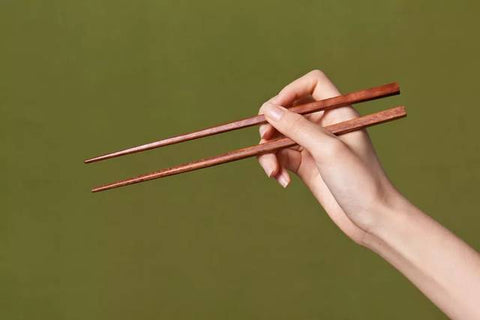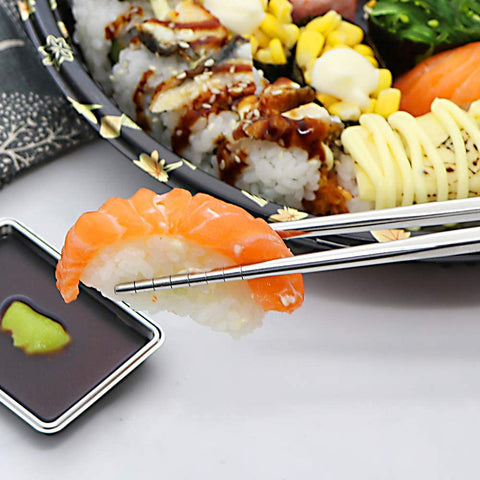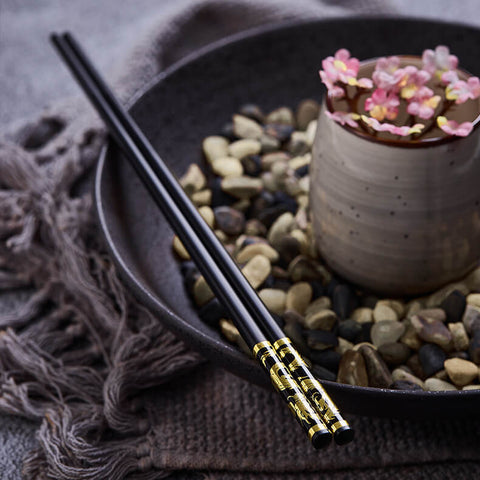Chopsticks are representative oriental tableware. Apart from us, the countries that use chopsticks in the world are mainly concentrated in Japan, the Korean Peninsula, Vietnam and other Han cultural circles. As the influence of Chinese people and Chinese food continues to rise around the world, chopsticks have also become very common in many Western countries. Ordinary families in many places in Europe and the United States will also prepare chopsticks, although the frequency of use is far less than that of countries in the Han cultural circle.

The countries that mainly use chopsticks in the world should be China, Japan, and South Korea. Of course, there is also North Korea, the brother of North Korea. The cultural habits of the two are basically the same, so I will talk about it together. Hundreds of years after chopsticks appeared in China, they gradually spread to the Korean Peninsula and the Japanese archipelago, becoming the "traditional tableware" of the two places. Although China, Japan and South Korea are all countries that use chopsticks to eat, there are very obvious differences in the chopsticks of the three.
The first is the material. Chinese and Japanese chopsticks are generally made of wood or bamboo, while Korean chopsticks are generally made of stainless steel or copper metal.
The second is the shape. Chinese chopsticks are generally round at one end and square at the other end, symbolizing a round sky; Japanese chopsticks are relatively short, usually half to two-thirds of Chinese chopsticks, and both ends are round, with very sharp tips; Korean chopsticks are of medium length, and they are not round, but generally flat.
Just from the appearance, it is easy to tell the difference between the chopsticks of China, Japan and South Korea. Compared with Chinese chopsticks, the Japanese often eat fish and need sharper tools to pick out the fishbone, so the current Japanese chopsticks appear; Korean chopsticks are generally used to pick up barbecue and the like, and are made of metal. Chopsticks are more durable and easy to clean, and they are less likely to be damaged and allow bacteria to grow. However, Korean chopsticks are very slippery and difficult to use.
In addition, the chopsticks used in countries outside the East Asian chopsticks cultural circle are generally not much different from the chopsticks in China. For example, the chopsticks in Southeast Asia, Europe and the United States are mostly due to the influence of Chinese eating habits, so the chopsticks in these places are basically not much different from those in China.
The Chinese use chopsticks, which can be said to be handy and almost "omnipotent". Whether it is eating or drinking soup, they can be done with chopsticks. In addition to general food picking, Chinese people can also use chopsticks to pick fishbone and open meatballs. , Complete many eating actions such as picking, dividing, and pinching. However, it is also difficult for most foreigners, including Koreans who are deeply influenced by Central Plains culture. For example, Koreans can only use chopsticks to pick up food, but they still need to use spoons for eating. Koreans usually use spoons to dig food, but it is quite unnecessary for Chinese people to put vegetables on top and eat with spoons.

In Southeast Asia, except Vietnam, the indigenous peoples in other places were originally "hand-grabbing people", such as Thailand, Myanmar, Indonesia, etc., and the local residents of non-Chinese immigrants used to grab food with their hands. In addition to the Chinese community in Southeast Asia, the local aborigines have also begun to learn to eat with chopsticks. For example, eating hot pot, soup and hot food, they all need to use chopsticks. Chopsticks are widely used in Southeast Asia except Vietnam, Singapore and Malaysia. In addition, the frequency of occurrence is actually average.
In the West, people usually use chopsticks because they cannot resist the temptation of Eastern diet. Many people in the West are also very envious of the fact that Chinese people can eat, eat noodles, fish, and meat with just a pair of chopsticks. Almost all food can be eaten with chopsticks. For many oriental foods, knives and forks are actually helpless, or rather difficult, such as ramen, hot pot, and so on. The desire to eat is the biggest motivation for Westerners to keep learning how to use chopsticks. Many non-Chinese families in Europe and the United States will also prepare chopsticks for emergencies.


